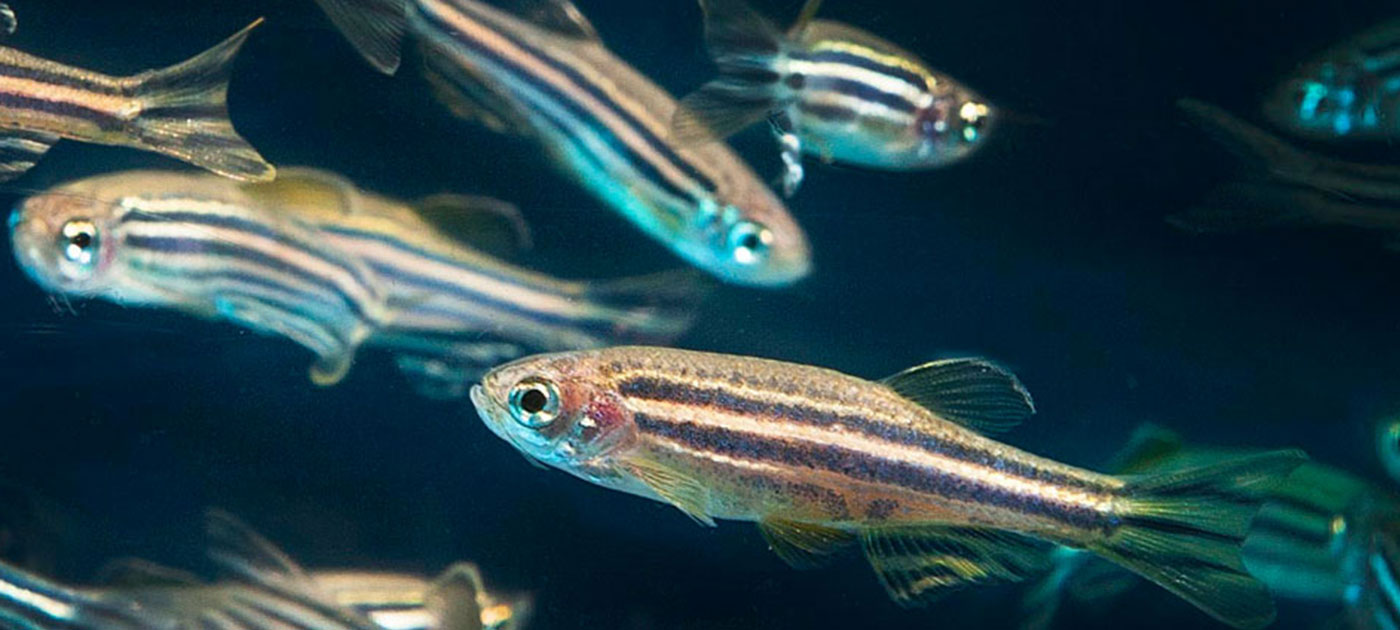We all know Casper as the Friendly Ghost who flies around with Wendy. But what does this lovable ghost have to do with finding new cures for cancer?
The answer is zebrafish. For years, scientists have been using zebrafish as model organisms for a variety of different conditions, such as growth and development, neurodegenerative disease, and diabetes (Heath, 2013). Since they are small and reproduce quickly, they are ideal for keeping in a lab (Heath & White, 2013). Additionally, they are perfect for studying development, as their eggs grow outside of the mother (unlike mice), but are still vertebrates and, thus, are similar to humans.

Zebrafish are naturally transparent during the embryo and larval stages (Heath & White, 2013), but scientists have now taken this transparent property one step further. Typically, as zebrafish larvae grow and develop, they gain pigmentation. Dr. White and his research team at Boston Children’s Hospital have stopped this pigmentation by “knocking out” specific genes, keeping adult fish transparent (White, 2008). This is useful for watching how the fish, and tumors, develop. The heart, brain, lateral vessels, and intestinal tube can be easily seen in these clear fish (White, 2008).
The new zebrafish was playfully named after the friendly cartoon ghost. This development opens up many new areas for study since more diseases affect adults than children; the model allows researchers to see development into the adult stage. Their transparency allows scientists to monitor a disease without having to harm the organisms. This means that scientists can watch long-term progressions of illnesses. Recently, the focus has shifted to cancer research.
The Ideal Model Organism
What are the qualities of an excellent model organism? One that is small, inexpensive, and similar enough to humans to model diseases; one that easily replicates for additional trials; and one that contracts the same disease of study in a similar manner as humans.
These are some of the many reasons that the zebrafish, or Danio rerio, is seen as an ideal model organism for cancer research. They are small and, thus, many can be tested in small lab spaces. They also reproduce weekly and produce 100-200 embryos each time they mate (Heath & White, 2013).
Cancer-Fighting Fish
One in two men and one in three women will develop cancer in his or her lifetime (“Lifetime Risk,” 2012). Everybody probably knows someone who has suffered from the disease. Cancer does not have a singular cause. It can appear in various places throughout the body and develops differently based on where it is located. Some cancers have a genetic component, while others are purely the result of environmental factors. However, all involve out-of-control cell growth (“What is Cancer?”, 2012). Much progress has been made in recent years involving understanding this disease and finding new treatments. However, we are still a long way from eradicating cancer.

Scientists now believe that the Casper zebrafish may hold the key to gaining a better understanding of how cancer moves and changes, which could provide insight into how to create better treatments. Scientists were even able to inject the fish with pigmented melanomas and watch the cancer grow and metastasize (Heath & White, 2013).
Additionally, cancers can be purposefully triggered by slight changes in a fish’s genes. Researchers are now able to easily microinject early stage zebrafish embryos with the gene of interest in the form of DNA or mRNA. The fish then grow and develop and can pass on the injected gene to the next generation (Heath, 2013). This technique could be used to examine the genetic component of cancer or other hereditary conditions, such as Alzheimer’s or Inflammatory Bowel Syndrome (IBS) (Newton, 2008).
Another feature of these magical fish is that they develop cancer is the same way that humans do. Cancers in zebrafish “often share common genetic underpinnings” with human versions of the disease (Heath & White, 2013). Zebrafish also develop specific cancers in the same areas that humans do. For example, a tumor of intestinal cancer would develop in the fish’s gut just as it would in a human’s. This makes studying patterns of growth easier, as scientists know where to look for the cancer, and gives a more accurate idea of how the fish’s cancer relates to its human counterpart.
A Cure For Cancer?
As of now, this new model organism holds great promise for the future of cancer research. There are only a few possible disadvantages to using Danio rerio as a model organism. First, as with all model organisms, they are not physiologically identical to humans. Additionally, some genes have more than two copies, making it difficult to determine genetic functions or correlations (Ali, Champagne, Spaink, & Richardson, 2011).
And although there will probably never be an umbrella panacea for all cancers, scientists seem to be heading in the right direction. Hopefully, by using research tools like the Casper zebrafish, we may be much closer to finding future treatments and cures for a wider variety of cancers. Maybe one day, curing cancer will be as easy as waving Wendy’s wand.
In Brief:
- Both men and women have a high risk of developing some form of cancer during their lifetimes
- Zebrafish are ideal model organisms for developmental studies because their embryos are transparent
- Researchers at Boston Children’s Hospital have developed a transparent mutant zebrafish commonly known as the “Casper” zebrafish that allows scientists to watch cancers develop in adult fish
This article was written by cYw9. As always, before leaving a response to this article please view our Rules of Conduct. Thanks! -cYw Editorial Staff
